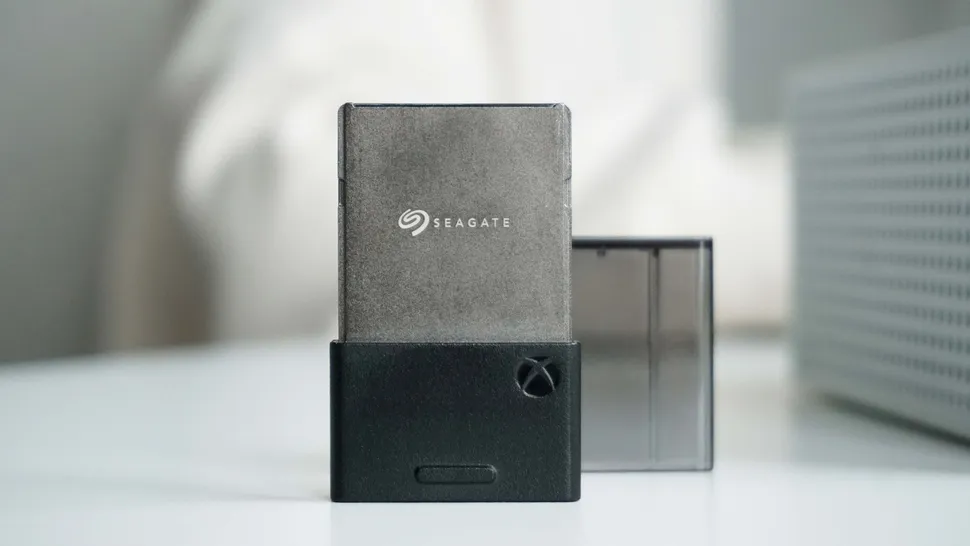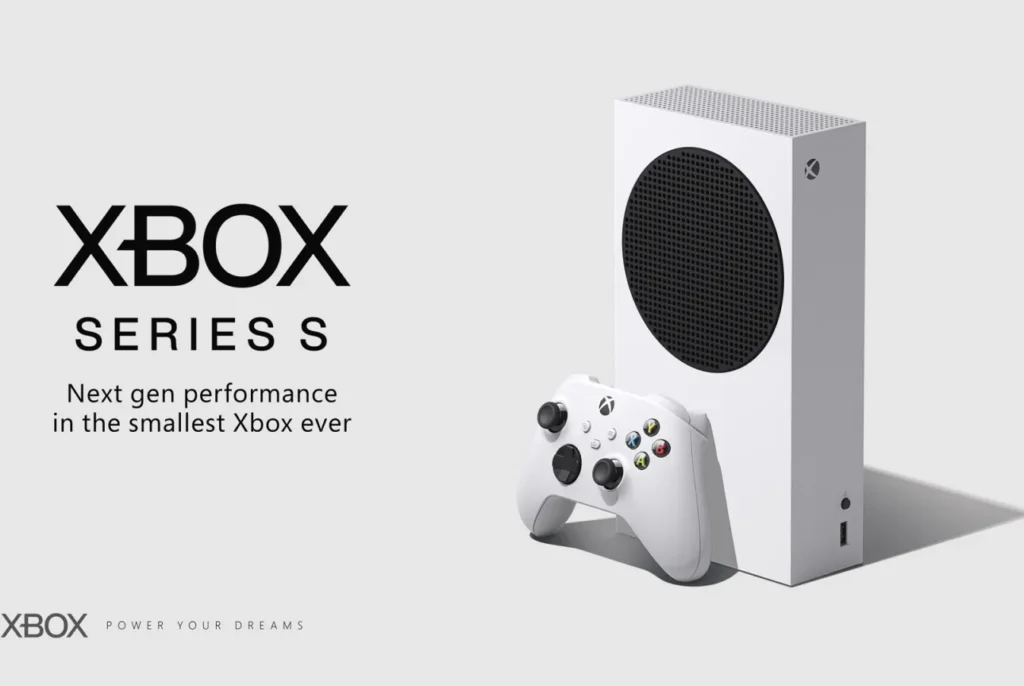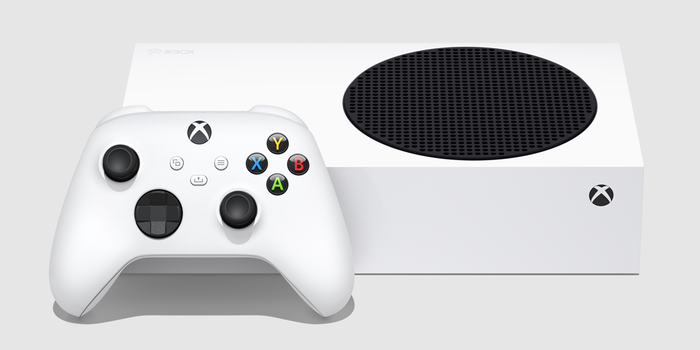The Xbox Series X|S boasts incredible gaming power, but its built-in storage can fill up fast. While Microsoft’s official Seagate expansion cards offer seamless integration and performance matching the console’s internal SSD, their hefty price tag-especially for the 4TB option-can be a significant barrier for many gamers. This article tackles the challenge of maximizing your Xbox Series X|S game library without breaking the bank. We’ll delve into the various storage solutions available, comparing the costs and benefits of Seagate expansion cards in different sizes, helping you determine your specific storage needs and ultimately make an informed decision that fits both your gaming habits and your budget.
Xbox Series X|S Storage: Affordable Solutions Exist
The Xbox Series X and S consoles boast impressive processing power and stunning visuals, propelling gaming to new heights. However, the potential for rapid storage expansion presents a significant financial hurdle for many gamers. Microsoft’s partnership with Seagate provides official expansion cards, but the price tag, particularly for the top-of-the-line 4TB option, can feel prohibitive. This substantial investment might deter players from fully embracing the potential of their next-generation consoles. Fortunately, the perception of necessarily exorbitant costs is misleading. More budget-friendly alternatives are available, allowing players to seamlessly increase their storage capacity without emptying their wallets. This article aims to illuminate those options and guide you toward a sensible and cost-effective storage solution. Understanding the available choices and effectively assessing your personal needs are crucial to making an informed decision. This ensures you maximize your gaming experience without breaking the bank. The initial consideration is a clear understanding of the official Seagate options and how they relate to more cost-effective means of storage expansion. The following sections carefully dissect the Seagate expansion card offerings, providing crucial context necessary for comparing them to alternative solutions. The goal is to empower you to choose the perfect storage setup for your personal preferences and budget. Moving beyond the initial, potentially daunting cost of expansion cards, the objective is to achieve optimal storage augmentation without compromise. Analyzing these options thoughtfully will help you navigate the landscape of Xbox storage options with greater confidence. The coming sections will provide a granular look into the various price points and storage capacities; from there, we will tackle methods of determining your own personal storage requirements. Seagate Expansion Cards: A Comprehensive Guide
For gamers invested in the Xbox Series X|S ecosystem, the limitations of internal storage space often become a significant concern. While Microsoft offers a proprietary expansion card solution, the high price point of the top-tier option can be prohibitive for many. Seagate, a leading name in data storage, provides a potential solution with its range of expansion cards specifically designed for seamless integration with the Xbox consoles. Understanding the nuances of these cards is crucial to making an informed purchase decision.
Seagate offers a trio of expansion card options:

1TB, 2TB, and 4TB. The performance across all three cards is identical; each replicates the speed and functionality of the Xbox Series X|S internal solid-state drive. This ensures consistent loading times and smooth gameplay, negating any performance compromises often associated with less expensive external storage options. The plug-and-play nature of these cards significantly simplifies installation; users simply insert the card into the designated slot on the rear of their console, and the console automatically recognizes and configures it for use.
This straightforward setup is a testament to Seagate and Microsoft’s collaborative effort to provide a user-friendly experience. The cards’ compatibility extends beyond the latest generation of Xbox consoles, proving equally useful for playing upgraded Xbox One titles. Consequently, these expansion cards effectively future-proof a player’s investment by catering to both current and backward-compatible games. This broad compatibility ensures that regardless of a user’s gaming library, the Seagate expansion cards offer a versatile solution for enhancing storage capacity. The simplicity and performance delivered by this design undoubtedly appeal to a wide range of console gamers. Understanding the factors involved in choosing the appropriate size, however, necessitates a careful consideration of individual needs and budgets. This is particularly critical given the significant price differences between the available capacities.
Understanding the financial implications of expanding your Xbox Series X|S storage is crucial before making a purchase. Seagate’s expansion cards, while offering seamless integration and performance matching the console’s internal SSD, present a range of price points that demand careful consideration. A straightforward cost per terabyte analysis reveals a compelling argument for choosing a smaller capacity card, particularly for gamers with moderate storage requirements.
The largest capacity card, offering a substantial amount of storage space, naturally commands the highest price per terabyte. This is a function of economies of scale; manufacturing larger capacity drives inherently involves higher costs. While the allure of vast, readily available space is undeniable, it’s important to weigh this convenience against the significant premium paid per gigabyte compared to smaller options.
Consequently, the lower capacity cards, the 1TB and 2TB models, present attractive value propositions. Purchasing a 1TB or 2TB card, depending on your gaming habits, could prove to be a significantly more cost-effective solution. The savings achieved by opting for a smaller card can be substantial, freeing up funds for additional games or other gaming accessories. Many players find that a smaller capacity card perfectly meets their needs, rendering the expense of a larger, more expensive option unnecessary extravagance.

This financial aspect merits careful scrutiny. The substantial difference in price between the various Seagate card sizes translates to a considerable disparity in the cost per terabyte. This price-per-gigabyte ratio directly reflects the value each size offers, allowing consumers to make an informed financial choice. The selection should hinge on individual gaming habits and the storage space each game necessitates. A player who prioritizes a select few large-scale titles may approach storage needs differently than a player with a diverse library of smaller, indie titles. A thorough assessment of individual needs, coupled with an understanding of the price differentials, will yield a decision that optimizes both value and storage capacity.
This financial analysis should serve as a critical component in the decision-making process. Moving forward, we will delve into a more personalized guide towards assessing your individual storage needs, considering factors such as your gaming preferences and the typical size of games within your library. Assessing Your Storage Needs: A Practical Guide
Understanding your storage requirements before investing in an Xbox Series X|S expansion card is crucial for maximizing your budget and ensuring a smooth gaming experience. The process involves considering several vital factors, each playing a significant role in determining the optimal storage capacity for your specific needs. Failing to properly assess these factors could lead to unnecessary expenses or, conversely, frustrating storage limitations down the line.
Firstly, consider your gaming library and its projected growth. Do you primarily play large, graphically intensive titles such as Call of Duty, known for their substantial file sizes, or do you prefer a diverse selection including smaller, independent games which occupy significantly less space? The answer greatly influences your storage needs. Understanding this distinction will help you estimate the total space required to house your current and future games.
Existing internal storage should be factored into the equation. The console’s native storage capacity provides a baseline from which to assess additional needs. If you already own a sizable game library that nearly fills the internal drive, clearly, a significant expansion is necessary. Conversely, a nearly empty hard drive suggests you can potentially start with a smaller expansion card. The existing space availability directly impacts the supplementary storage capacity required.
The frequency of game purchases and deletions plays a vital role. A gamer who frequently purchases new titles and deletes others to make space may only need a modest expansion, assuming they maintain a relatively static library size. On the other hand, an avid gamer who hoards a vast collection of games, rarely deleting titles, will likely require a much larger expansion to accommodate their expansive library. Careful consideration of your personal gaming dynamics will thus inform the decision.
Furthermore, think about the types of games you play. Many modern AAA titles, renowned for their breathtaking visuals and vast open worlds, occupy considerably more storage space compared to older or more modestly sized indie games. This variation in game sizes, which can range from several gigabytes to upwards of one hundred, must factor prominently into your storage needs assessment. Accurate estimation requires understanding both the size and number of games in question.
Analyzing these factors collectively allows you to arrive at a realistic estimate of your required storage capacity. While a 4TB expansion card boasts impressive storage, it may represent an unnecessary investment for many users. A thorough assessment emphasizes the importance of choosing a solution that appropriately aligns with your individual gaming habits and budget. This careful evaluation ensures you invest wisely, avoiding both overspending and potential future storage constraints.

The decision to expand your Xbox Series X|S storage shouldn’t be taken lightly, especially considering the significant price difference between available options. While the convenience and seamless integration of Seagate’s proprietary expansion cards are undeniable, their cost, particularly the 4TB model, might be prohibitive for many gamers. A careful evaluation of individual needs and gaming habits is crucial before committing to a purchase.
Understanding your gaming library is paramount. Do you primarily play large, graphically intensive titles like the latest Call of Duty or Forza Horizon installments, which easily consume tens of gigabytes each? Or does your collection consist mainly of smaller indie games that occupy considerably less space? The answer directly impacts the storage capacity you’ll require. Consider also the size of games you anticipate installing in the future, factoring ongoing updates and new releases into the equation. This thoughtful projection will assist you in determining the optimal size and corresponding budgetary implications.
Another crucial element is your existing internal storage capacity. The amount of space already available profoundly influences the urgency and magnitude of your storage expansion needs. If your internal storage is nearing capacity, upgrading becomes almost a necessity, prompting a more immediate decision on which expansion method to choose. Conversely, if you possess ample internal space, you might prioritize a smaller upgrade, choosing a more budget-friendly option rather than unnecessarily investing in a large-capacity solution.
The cost-per-gigabyte also represents an often overlooked factor. While the allure of a substantial storage capacity like 4TB is appealing, evaluating the cost effectiveness with respect to the storage space offered is crucial. The higher capacity cards frequently present a higher cost per gigabyte compared to smaller alternatives. This disparity in pricing underscores the importance of aligning your purchase with your actual needs. A 1TB or 2TB expansion card might prove perfectly adequate for many players, providing substantial storage expansion at a significantly lower cost. Carefully weighing your requirements against price per gigabyte can lead to considerable savings without compromising gaming enjoyment. The optimal choice is the one that balances your storage needs with your financial constraints, thereby providing the best efficiency in terms of both capacity and budgetary impact.
Ultimately, maximizing your Xbox Series X|S storage doesn’t require breaking the bank. By understanding the different storage options available, from affordable external hard drives to cost-effective internal NVMe SSDs, you can curate a gaming library that fits both your budget and your needs. Don’t fall for the pressure to spend hundreds of dollars on unnecessary upgrades – a little research and strategic planning can go a long way in ensuring you have ample space for all your favorite games without emptying your wallet. So, explore your options, optimize your storage, and get back to enjoying the immersive worlds waiting for you.

